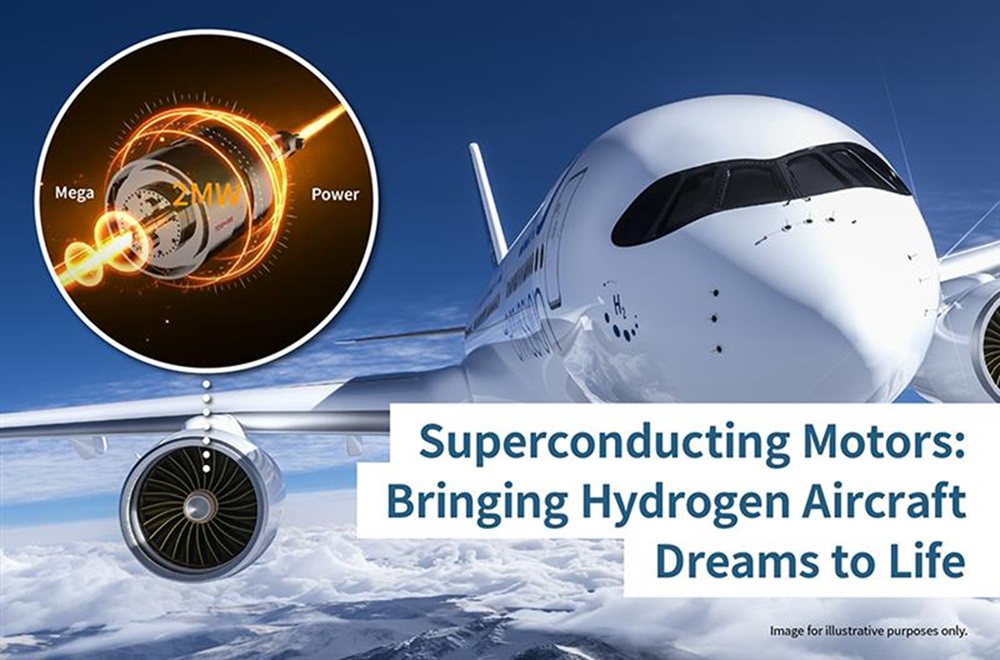A Player in the Shadows that Maintains Local Power Grids – An Evaluation Technology that Advances Microgrids
2023/10/09 Toshiba Clip Team
- Local microgrids are necessary for the take-up of renewable energy
- A world-first evaluation method that will help to advance microgrids
- Can a concept similar a low-cost mobile service provider be applied to electric power?
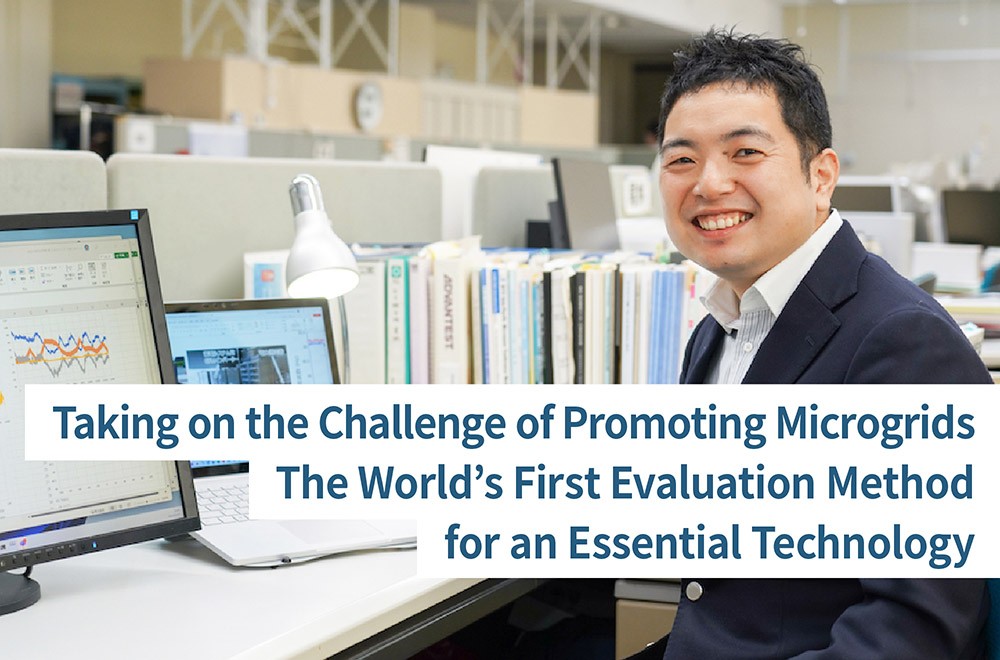
If we are going to achieve carbon neutrality, countries around the world need to adopt solar power and other renewable energy sources as a matter of urgency. Central to this is the microgrid, a small-scale power grid. Microgrids are a means to “local production for local consumption of electricity,” and are also attracting attention as a power source in the event of disaster. Toshiba has recently successfully completed, for the first time in the world, a demonstration experiment of a technology that ensures the stable operation of microgrids. Here we take a closer look at the details.
Success in a world-first demonstration experiment
“This was the world’s very first demonstration experiment of a GFM inverter,” says Dr. Tetsu Shijo of Toshiba’s Research and Development Center. “It gives us a real basis for developing evaluation criteria for microgrids.” To get to grips with this breakthrough, we have to know what a GFM inverter is, the difference between a large generator and a microgrid, and the challenges still to be faced. Shijo is happy to guide us through these intricacies.
“GFM stands for grid forming, which means building the grid and stabilizing the system the electricity flows through—maintaining the balance in this integrated system for power generation, transformation, transmission, and distribution. Inverters are devices that change the frequency and voltage of electricity, so a GFM inverter is a device that regulates electricity frequency and voltage in order to stabilize the grid.
“Until now, the effectiveness of GFM inverters has been proved theoretically, but nobody had verified it by connecting one to an actual power system. When we presented the results of our demonstration at an industry conference, people were surprised, and we got a lot of questions about the details.”
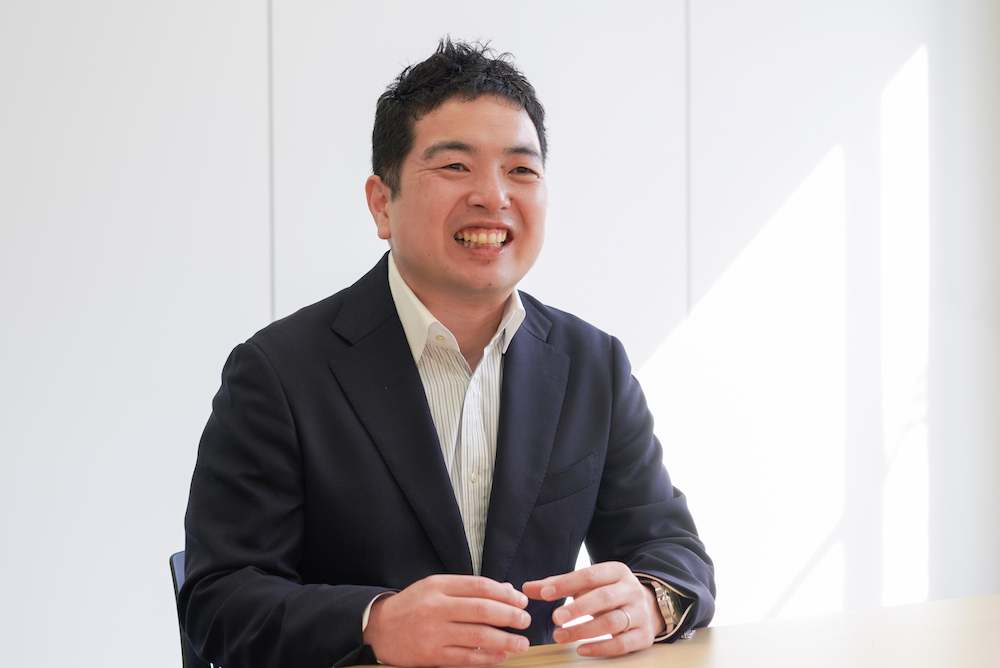
Tetsu Shijo, Expert, Wireless System Laboratory, Information And Communications Platform Laboratories, Corporate Research & Development Center, Toshiba Corporation
Toshiba takes pride in its longstanding commitment to energy supply, and not just to ensuring that plants operate according to theory, but in practice and as envisioned. Shijo also sees that as Toshiba’s role. So in the project to develop a GFM inverter, what difficulties had to be overcome to realize the world’s first demonstration experiment? We can take a look at the project while considering the significance of microgrids.
All about microgrids
For most of us, the electricity we use comes from large power plants. However, when disaster strikes, there can be long-term outages on remote islands and other places that are hard to supply. This is where the spotlight falls on microgrids, in which electricity is generated locally and consumed locally; truly a case of local production for local consumption.
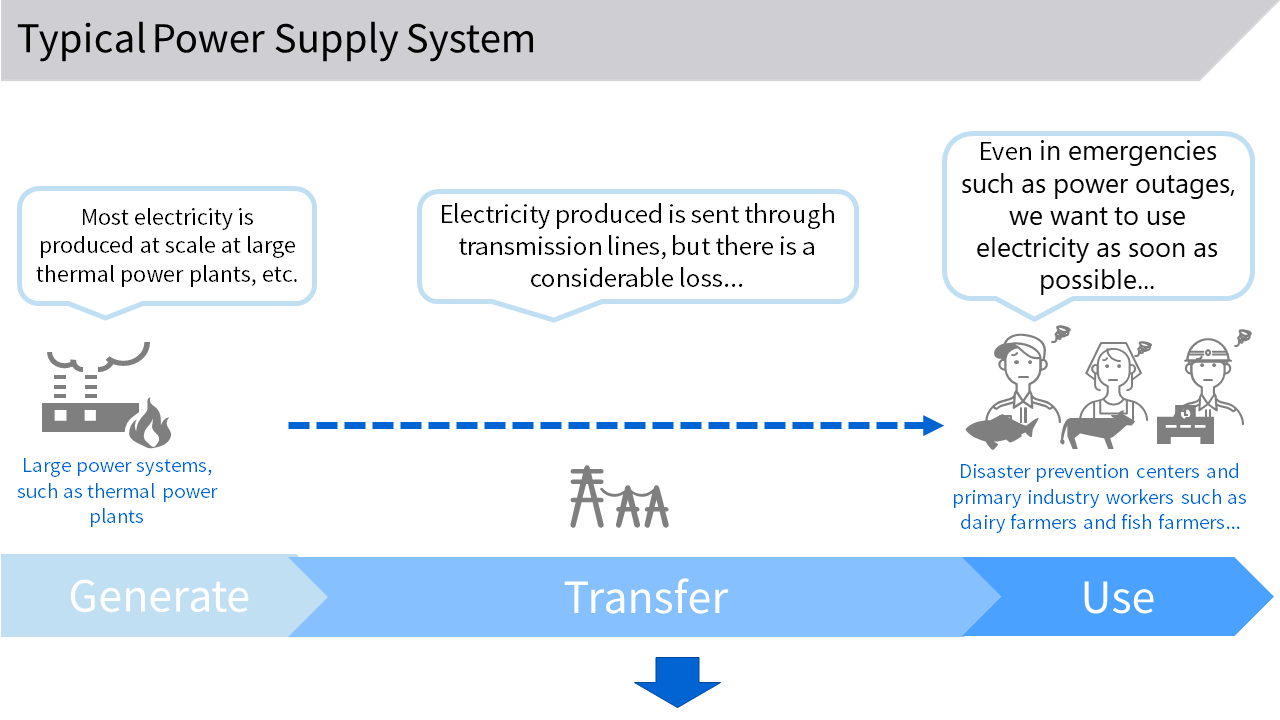
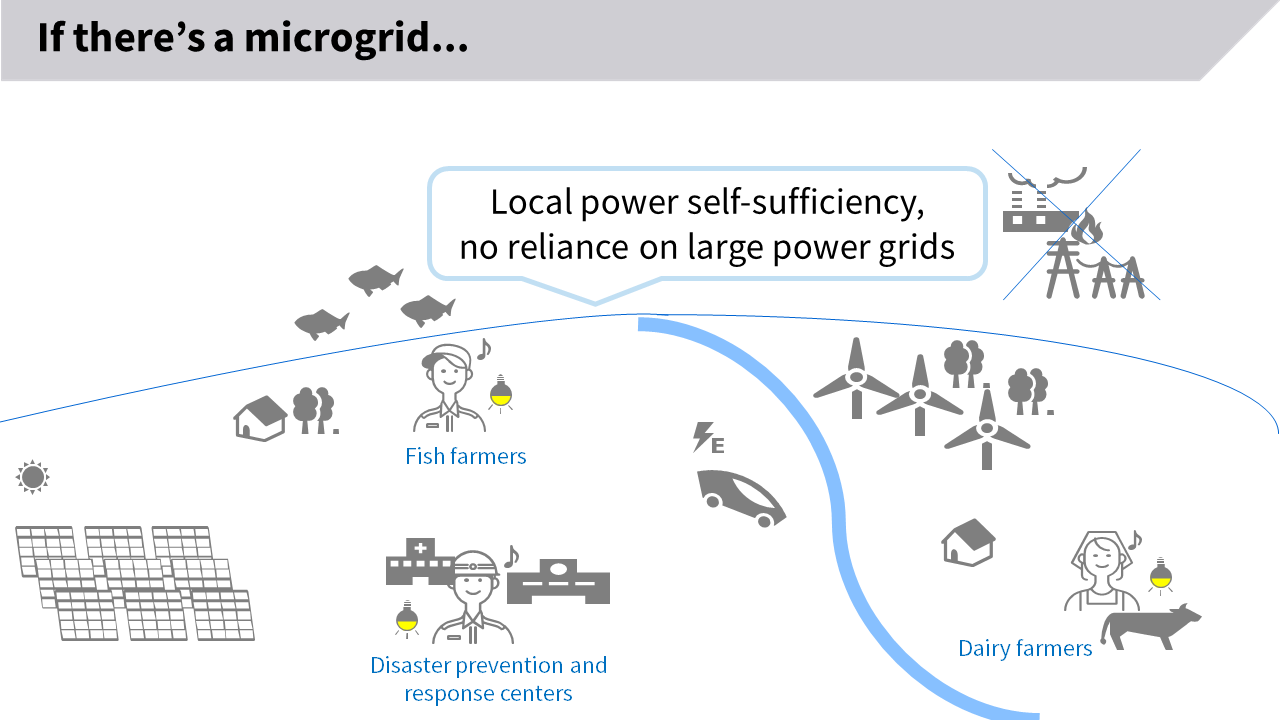
Microgrids do not rely on larger grids, and power is supplied and consumed within the community
Microgrids are needed in places where power needs to be maintained at all times, including disaster prevention and response centers, water and sewage systems, factories, and the premises of producers who deal with living things, such as dairy and fish farmers. They also come into play in meeting demand for the quick recovery of power supply after a disaster.
Mutsuzawa Smart Wellness Town, a development in Mutsuzawa in Chiba Prefecture, east of Tokyo, showed how resilient a microgrid can be in September 2019, when typhoon 15, Faxai, one of the most powerful storms on record, made landfall in the prefecture. The main power grid was out for three days, but the microgrid kept the lights on for its users.
Another tailwind for the introduction of microgrids is the aim to realize carbon neutrality by shifting to renewable energy sources, such as wind, solar and biomass generation. The progress of local power production and consumption can be seen in solar panels installed on houses and public facilities, the regional adoption of wind power generation, and the introduction of geothermal power generation that utilizes hot springs.
However, examples from Japan are relatively few and far between. It only a little over 50 years since Japan’s high voltage power grid was fully deployed nationwide, and many other countries have a longer operational history that makes it easier to advance replacement. Another factor raising the hurdle is that renewable energy can destabilize the grid. That was something that Toshiba had to overcome.
What to keep in mind when using renewable energy and operating a microgrid
This destabilization is all about frequency, and it is easier to understand what this means if we start by looking at large generators, like those used in thermal power plants. These generators boil water to produce steam. The steam then rotates a turbine, which generates electricity. The crucial point is that the rotation speed of the turbine matches the frequency of the electricity; because of this they are known as synchronous generators, and all generators in the area of a given power grid rotate in the same way. The rotational speed of synchronous generators barely changes when the load is slightly increased, and this means the frequency of the generated electricity remains constant. This is known as the inertial force. It reduces fluctuations in the frequency of electricity, stabilizing the overall power system.
However, solar and other renewable energy is asynchronous power generation that is not subject to the inertial force. As a result, frequency shifts with the level of output, and introducing a large amount of renewable energy into the grid increases system instability. If this results in a significant change in the frequency it has adverse impacts on power quality and generators, and in the worst case can result in large-scale blackouts. This frequency disturbance is known as step-out, and the ability to stabilize the frequency of the power system is important if we are to make more widespread use of renewables.
It is here that the GFM inverter provides a countermeasure. As noted, a GFM inverter regulates the frequency and voltage of electricity in order to stabilize the power system. Using a GFM inverter add pseudo inertia to renewable energy, allowing a stable power supply to be secured.
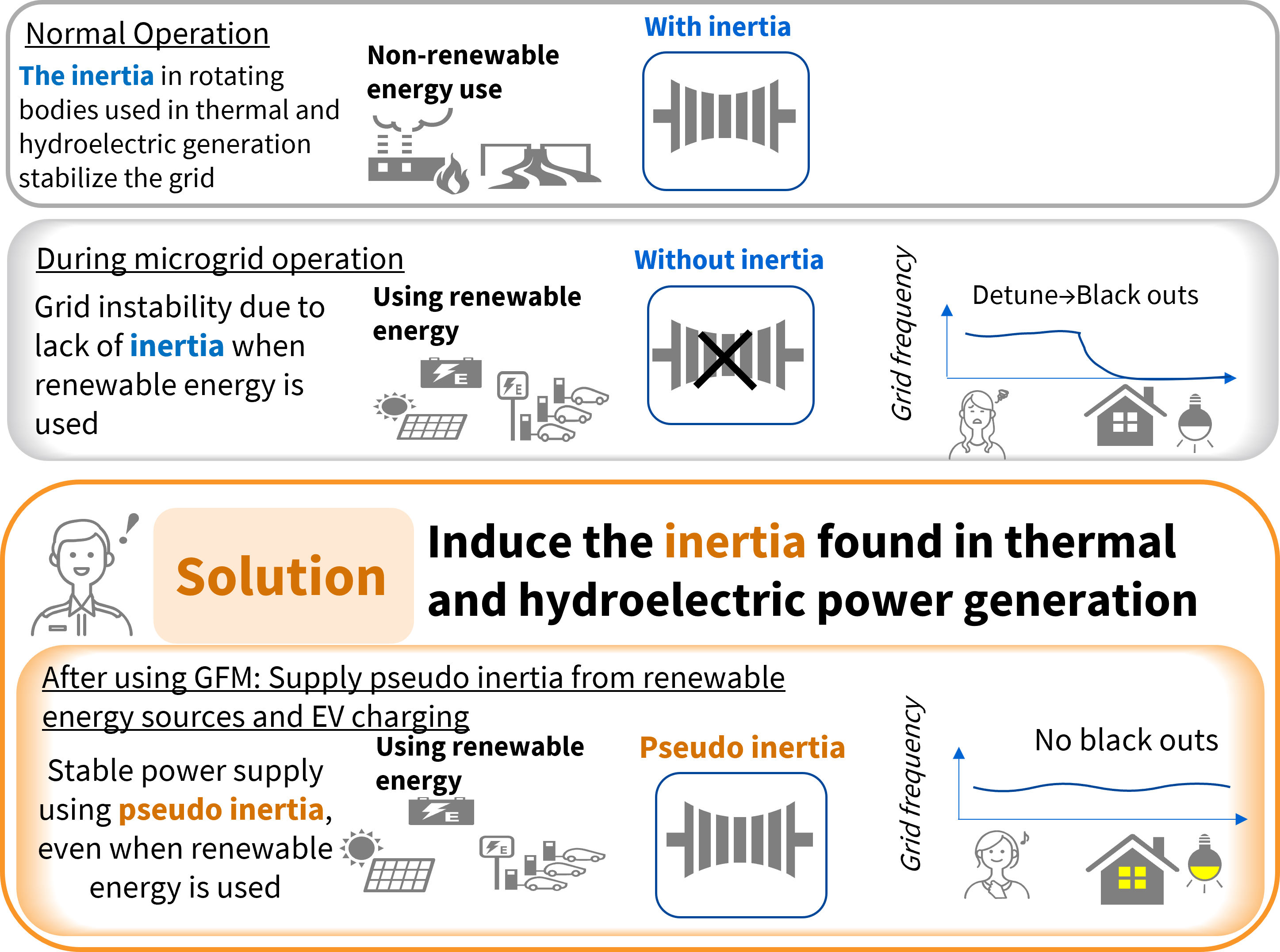
Pseudo inertia realized by the GFM inverter secured stable power supply, even with renewable sources
A new evaluation method to promote the GFM inverter
GFM inverters provide stable power supply by adding pseudo inertia to renewable energy. From fiscal years 2019 to 2021, Japan’s Ministry of the Environment promoted technology development and demonstration projects to strengthen measures to reduce CO₂ emissions. As part of this, Toshiba developed the GFM technology in collaboration with Pacific Power, the Institute for Sustainable Energy Technologies, the National Institute of Advanced Industrial Science and Technology, and Pacific Consultants. Incorporating a control algorithm into a conventional inverter makes it possible to induce the pseudo inertial force that enables autonomous power supply, even if a region experiences a power outage.
Demonstration tests are necessary to promote widespread use of the GFM inverter, but because the power grid is large and extensive, simulations have so far been the only way to move forward. Faced with this Shijo took action that overturned the common wisdom, and decided to conduct a demonstration experiment using a diesel generator.
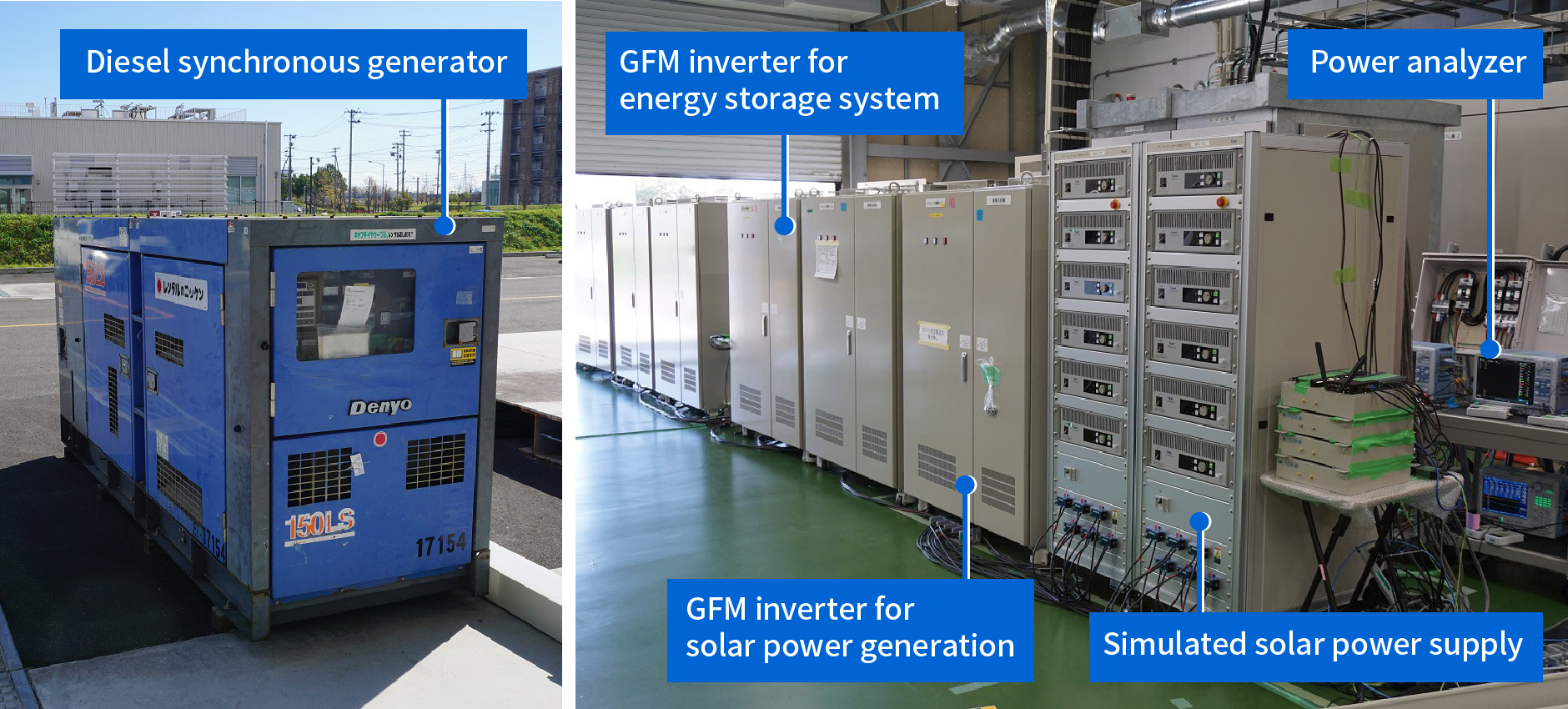
Diesel synchronous generator and a GFM inverter applied to solar power generation are operated in parallel on independent systems
Shijo is happy to explain his decision. “Verification that relies on simulation alone results in ambiguities that make it difficult to allocate responsibilities, and to compensate for this, quality specs tend to be too high. We wanted to be able to clarify responsibilities and ensure appropriate quality, and to keep costs down. To do that, we needed reliable demonstration experiments and evaluation methods.”
However, that is more easily said than done. “The bottleneck in verification experiments is how to set up the power system,” says Shijo. “It needs to operate in parallel with a large synchronous generator, but that is just too big for conducting a demonstration experiment. So we were left asking ourselves what we could do. Then it suddenly came to me: an emergency diesel generator that I had seen at work. The power grid is too large for us to conduct demonstration tests, but I thought that a 150 kVA diesel generator would let us take advantage of our strengths and conduct the tests. If using this evaluation method made it possible for us to make inexpensive GFM inverters, it could lead to the spread of microgrids that use renewable energy.
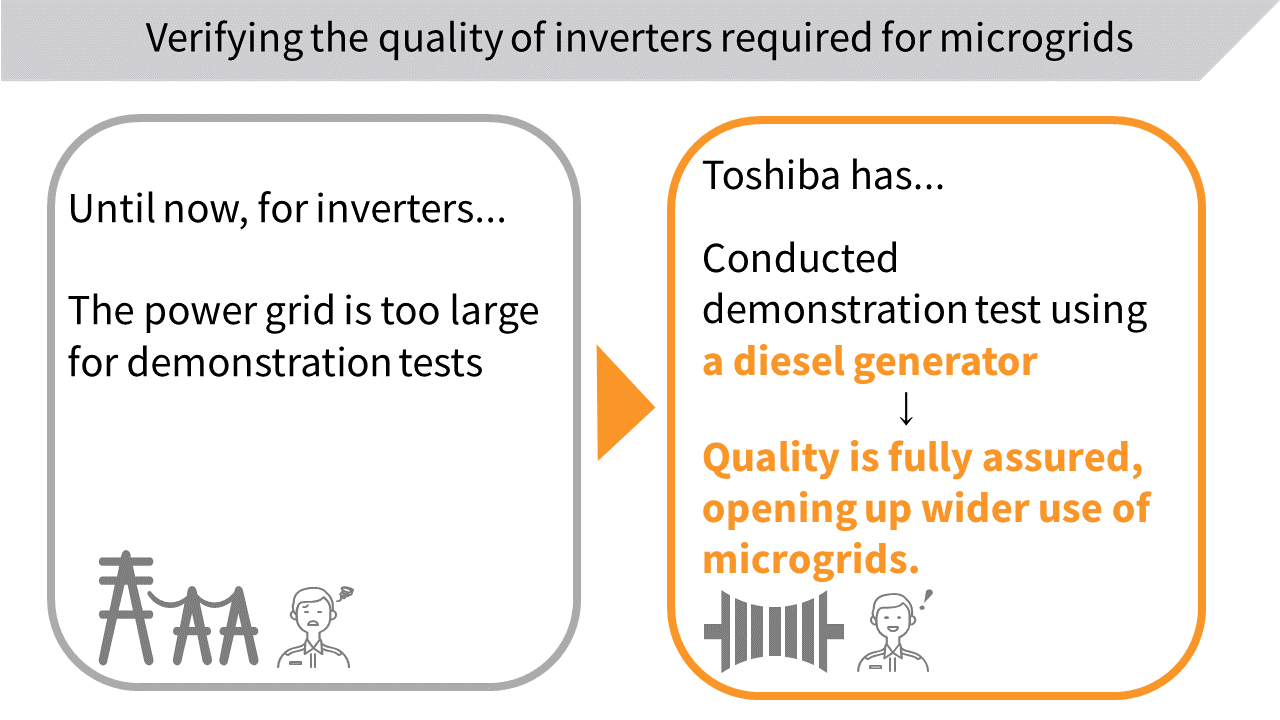
Validate the quality of GFM inverters by leveraging diesel generators instead of the power
This was all possible because Toshiba’s engineers could combine their diverse capabilities and knowledge in areas like power system operation, inverters, and synchronous power generation. As Shijo explains, this is one of Toshiba strengths, something other companies don’t have. And as we have seen, it was an initiative that also generated a lot of interest at an industry conference.
The case for the power supply version of a cheap mobile service provide
Shijo’s insistence on proving that a technology actually works in actual field conditions rather than simulations reflects his background. He has a doctorate in electromagnetic field theory, and in his earlier work he was involved in developing antennas for automotive anti-collision radar and for contactless charging systems for electric vehicles. It was after that that he came to the development of evaluation technology for GFM inverters.
“What was highly evaluated at the conference was that we brought the existing technology to the stage of actual equipment verification,” Shijo recalls. “In radio engineering for wireless communications, there are many cases where the actual equipment does not work as simulated. That’s why we did it, even though there was no precedent.”
Shijo then mentions than in communications networks there is a performance concept called “best effort,” the provision of a service where network operators do not guarantee performance or quality. In the industry it is common practice to determine the communication rate that can be achieved under the best conditions, and then to conduct business using that figure. He suggests that for local power grids there could be a type of best-effort model that emphasizes supply.
“Think of the power grid as a stable, high-quality telecommunications service provided by a major carrier. Then think of a microgrid based on renewable energy as a kind of cheap mobile service that provides internet and telephone services with moderate quality but at a low price.
“Not everyone wants high quality communications on their mobile phones. It’s the same with electric power. For instance, any facility that needs power quickly in the event of a disaster will prioritize power supply over quality of power. What we want to consider is how to increase the number of power options, by doing things like combining power supply with storage batteries, with an emphasis on low pricing.”
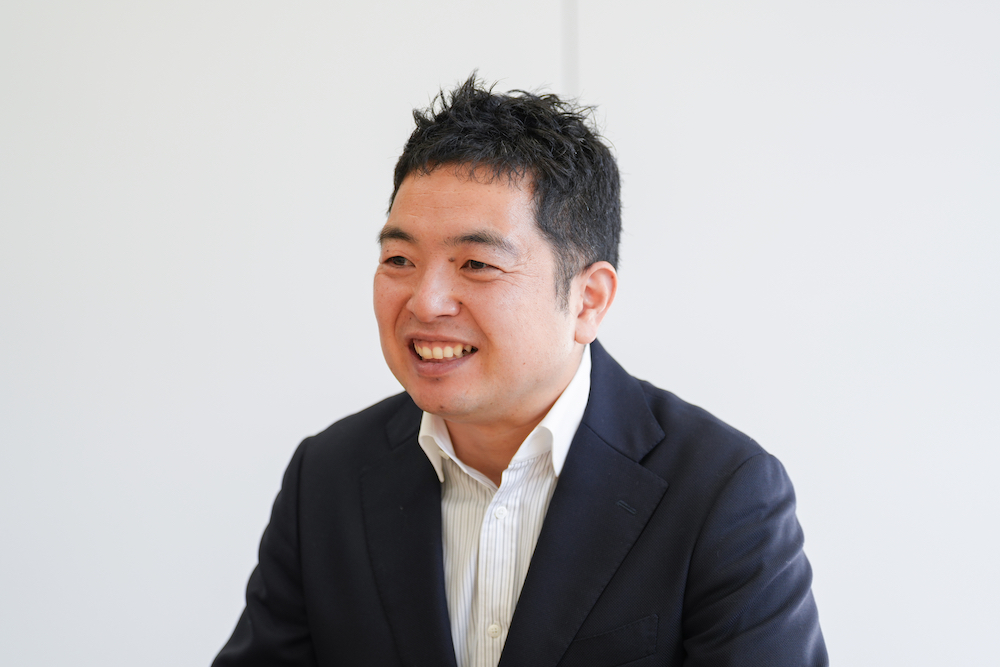
GFM inverters and regions leading the way in decarbonization
Japan’s Ministry of the Environment is trying to create 100 “decarbonization leading locations,” model cases for local decarbonization efforts, by FY2030. These locations will serve as models for carbon neutrality, with virtually zero CO₂ emissions from electricity consumption in the consumer sector, covering households and the service sector. Along with this, we can expect to see progress in the microgrids that have already been introduced.
That is certainly how Shijo sees the situation. “For the towns and villages that take the lead in decarbonization, the introduction and expansion of renewable energy will be key, and we can expect to see more microgrids in operation. As I explained, GFM inverters will add pseudo inertia to renewable energy and contribute to the stable power supply by microgrids. As we approach fiscal year 2030, we should see more GFM inverters being introduced.
“I would be happy if the GFM inverter evaluation technology developed by Toshiba helps promote microgrids and renewable energy. But the inverter is a means, not an end. What we are doing is establishing an evaluation method so that anyone can evaluate and use GFM inverters.”
The wider uptake of renewables is essential for the realization of carbon neutrality. Microgrids are a cornerstone for this, the realization of local power production for local consumption, and an important tool for mitigating disaster risk. There can be little doubt that the evaluation technology for the GFM inverter, the means to stable operation of microgrids, has a leading role to play behind the scenes in supporting local power grids.
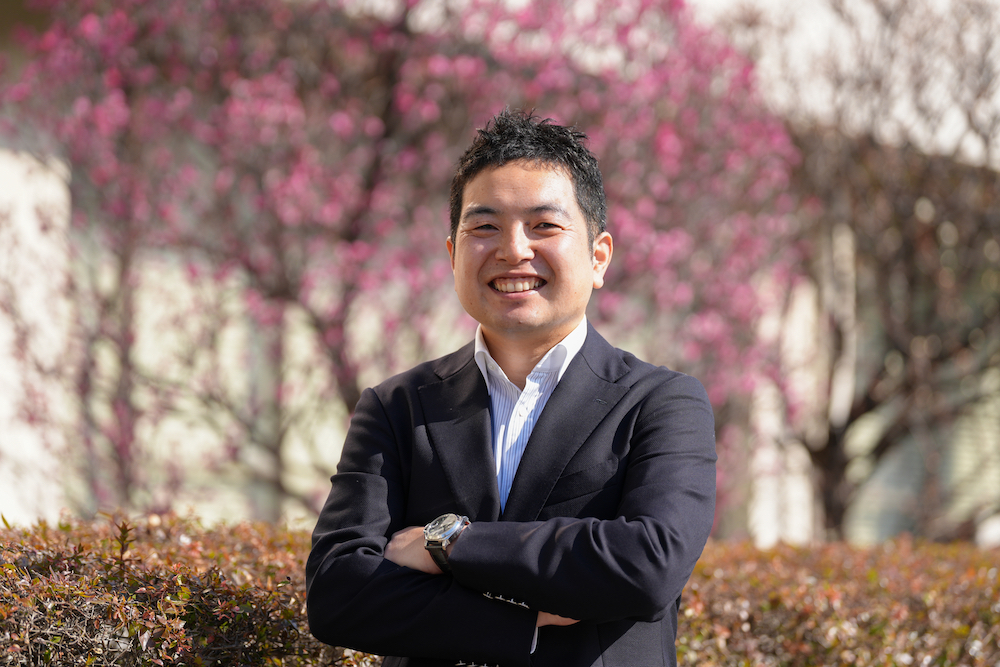
![]()







